
Preppy, But With an Edge
An interview with menswear designer Ernest Alexander Sabine from N.Y.
09/10/2014
In five years' time, Ernest Alexander Sabine created the menswear and accessory label Ernest Alexander and opened his flagship store in New York's prestigious Soho neighborhood; GQ Magazine named him America's Best New Menswear Designer in 2013. Paradoxically, Sabine didn't set out to become a designer when he started out, and he entered the fashion world rather late in his career.
Sabine studied art history and business, worked at the Peggy Guggenheim Museum in Venice, and then in the field of fashion marketing with Bonobos Men's Clothing... until one day he decided to cut the pattern for life from a decidedly different cloth.
Ernest Alexander Sabine's menswear label can currently boast that it is 100% made in the USA. From the first seam to the last, the Ernest Alexander line is created in Manhattan's legendary fashion design and production quarter – the Garment District, and it fully reflects the classic American aesthetic.
Sabine has carried the inspiration behind his success within him since childhood, when he was a student at the illustrious Belmont Hill School for boys and had to adhere to a strictly elegant dress code: starched shirt, pressed slacks, jacket and tie. At home, wonderfully handmade items, clothing patterns and sewing machines were daily standbys – Sabine's grandmother and great-grandmother were impassioned seamstresses, having supported themselves with the skill after fleeing to the US as WWII refugees.
Indeed, Sabine's roots can be found in Latvia. He speaks fluent Latvian, even though he was 22 years old by the time he first set foot in the land of his mother's forefathers. Over the last few years, the young designer has traveled to Latvia with increasing frequency, and now he has brought his brand over here as well. In cooperation with the local, socially-responsible fashion company MAMMU, a new collection was born – accessories designed in New York, but manufactured in Latvia. Made from traditional Latvian materials such as wool, linen and leather, the line consists of knits and leather items fashioned in a preppy American style.
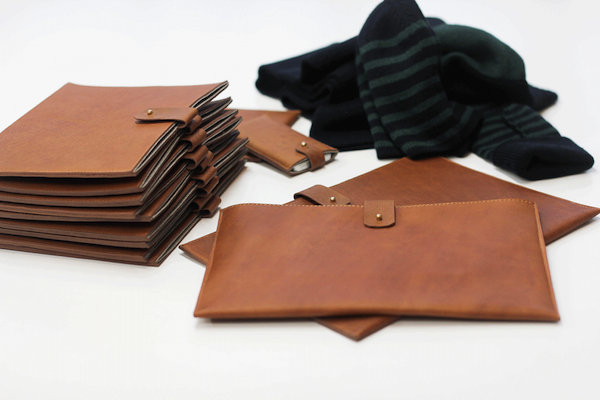
From the collaborative collection by Ernest Alexander and the Latvian socially-responsible company MAMMU
How would you like to introduce yourself?
I'm a regular guy with a knack for fashion who appreciates really well-made things.
Even though I came into the business relatively late in the game, I've had an indirect link to fashion since early childhood. I didn't begin my career path as a designer, but it's never too late to start something new!
I grew up in Boston, Massachusetts, in the very conservative northeastern part of the state. My parents sent me to the Belmont Hill School for boys, which had a strict dress code. I believe that really influenced my sense of style.
My mother is Latvian, and on Sundays I went to Latvian school. I've always had strong ties to Latvia and have held it close to my heart, even though I had never been there. I went to Latvia for the first time when I was 22 years old.
How did you get into the fashion business?
In New York I studied art history and later, business. After that I worked here and there, in fashion advertising. I quickly figured out that I don't want to work in finance or consulting, and that I'd rather do something that I can get passionately excited about. I began to think that I'd like to create that which I had been extolling through advertising, and I had always been interested in men's fashion.
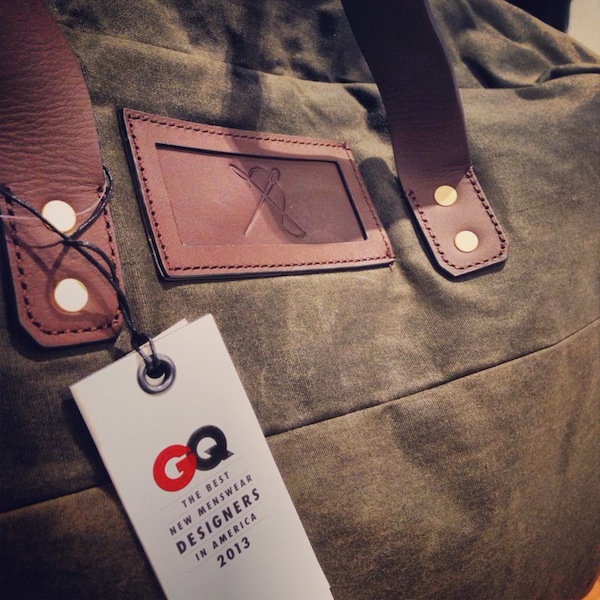
What was the first thing you made?
I have secretly always been obsessed with bags. I knew that I wanted to create the ideal bag for a man. I sat and sketched for hours. Then, from the multitude of workshops located in New York, I had to find the one that could make a prototype of my first bag. It took six months to make this prototype. And that's how I started my brand – with just one product, which then became a bestseller. Then came the selling and marketing bits, new products were added, and organically, over these last five years, the company has grown into Ernest Alexander.
So, it turns out that one doesn't always need a corresponding education to start a business like this.
It would be very arrogant of me if I said that an education is not necessary. Education, in itself, is essential – all of the little things that we learn, however indirectly, form our views and way of thinking. However, I don't think that one has to study a certain profession to be able to work in it.
What is your design process like – do you usually start with sketches, or are you inspired by the materials themselves?
Men's fashion is very functional. What's important are real needs – What is essential for a man? What we will he really wear? Does he need a briefcase? A better shirt? It's an approach to design that is based on needs.
Sometimes it's hard to draw, because in reality, things are different than they look on paper. You need a physical prototype, and that's why I often cut pieces of cloth, tinker around with the material...
Doesn't this need for functionality make men's fashion a very limiting sphere for creative work?
Men usually tend to shop much more conservatively than women; men follow certain rules for dressing – they tend to be very structured in their choices. That's both good and bad. It's good because there are definite guidelines and the designer can work in a set trajectory; but at the same time, it's a bit frustrating because one wants to create, and create something special.
In having to stick with creating things that people will actually buy and wear, I express myself in the details. Accents make up an interesting field of creativity – zippers, seaming, the color of the lining... There's room for playfulness. And I think that men like details that aren't too loud.
What sorts of materials do you prefer to work with?
Basically, heavyweight, durable leather of the kind used for making horse saddles, and waxed cotton – it's waterproof and it looks great! These are expensive materials, but we go for quality. The choice of these materials was made after careful study of the history of fashion design, as well as knowing what's in style now.
What's going on in your studio right now?
We're growing and getting increasingly busier and busier. I have a great team and design assistant. Since I'm not a classically-trained designer, he helps me execute my ideas by creating the spec drawings and sketches, which I don't always know how to put down on paper.
Every fashion label, every interior design project, all architecture, even music – has to have its own special message – a very clear vision. Often times it's hard to hold on to that because the people around you come with their own suggestions and ideas about what should be changed. You have to stand up for yourself; you have to be strong and do things the way you see fit. It's good if you have a good team by your side.
What role does skilled craftsmanship or handwork have in your design?
The definition of what is handmade has changed. In my business, it makes up about fifty percent. For instance, the making of bags is still an intensely handwork-based process. Some things are done by machine, such as the sowing, but the leather strips and certain pieces are cut by hand and glued by hand. During the construction process, the bag is worked on by a machine, then by hand, then back to a machine...
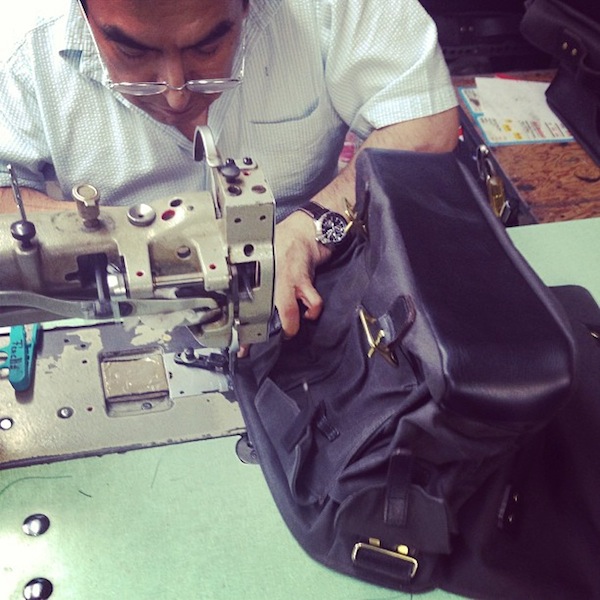
Over the last five years, handwork and quality construction have become increasingly valued in men's fashion. Men are looking for better-made shoes, suits, bags... It is important to make a product as well as possible, using the best available materials, and making sure that the details are durable. We always test our bags in an effort to find any shortcomings or weak points.
Along with the financial downturn, men began paying attention to where things were made. In the last decade, the big US factories have moved to China and Vietnam.
Do you ever experiment with materials? How about innovations?
Yes; for example, when we worked on the MAMMU line, we used waxed linen for the linings of some of the leather goods. That was new to me. It's always interesting to discover what you can add to an already established product or method.
Are you afraid of ever running out of ideas?
After the start of every new season, I'm like: My God, what am I going to do now...?! For five years now, one bag has been our bestseller; how do I come up with the next bestseller?! Then I'm overcome with the fear that my best days are behind me, and that I'll never be able to create something great again. And weariness creeps up, because it's not as if I can devote every working week to designing – I have a business to run.
It's easier if there's a definitive theme, such as motor-racing. Then we research classic photographs and films of race-car drivers and motorcyclists... In this way we can latch on to a feeling, inspiration comes, and we can start working.
That's why the best way to get inspiration is to look for it in other spheres – in culture, architecture, design, music... Traveling and meeting with people also sparks new ideas.
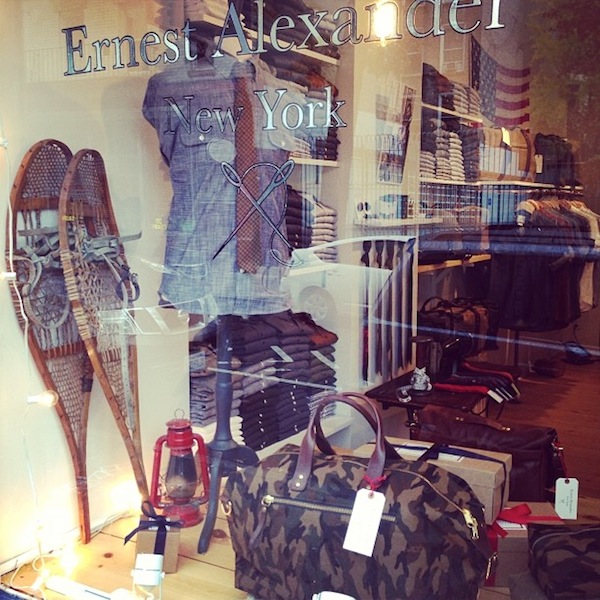
The Ernest Alexander store in New York's Soho neighborhood
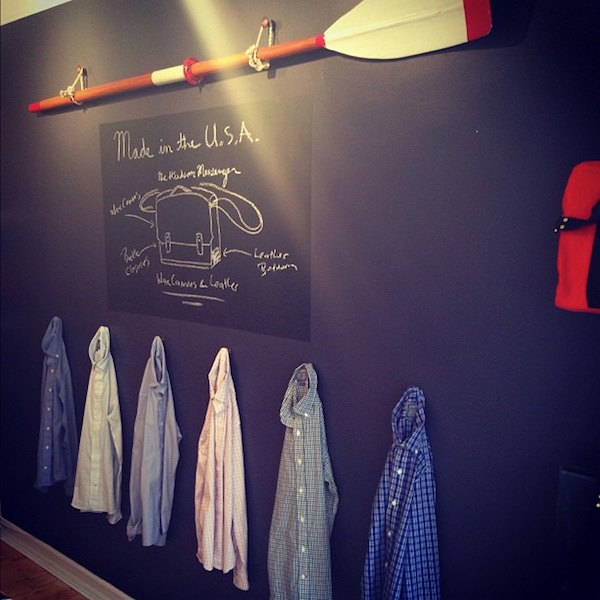
Do you travel a lot? Have you noticed any differences in how American and European men dress?
I travel a couple of times a year. The cut of clothes in Europe is much slimmer. Well... Europeans are also much more fit, and the clothing looks much better! I've noticed that Latvian men wear tighter pants. That's great!
But overall, I think that men are starting to dress increasingly better. Concerning historical menswear, I'm very inspired by the first two decades of the 20thcentury, when men wore brimmed hats. We're slowly returning to this sort of elegance.
How do the men in New York dress? What do you see on the streets?
That depends on the situation, of course, but the main thing one notices is that men in NYC are much more daring in terms of experimentation. They're open to various combinations, such as wearing the vest from a suit, Japanese jeans, and American-style oxford shoes.
How would you describe the kind of man that wears Ernest Alexander?
My designs are for the man who values the classic, as well as that thing in fashion we call “edgy”. A man who is dressed elegantly enough to go to work, but it's not boring. You could call it a slightly preppy aesthetic, but with an edge.
Do you wear your own designs? Is that even a prudent thing to do?
Yes, but I try not to overdo it, and I try to select just one thing. Dressed head-to-toe in it would be a bit strange. But I do think that you have to wear your own designs, otherwise it means that you don't believe in them.
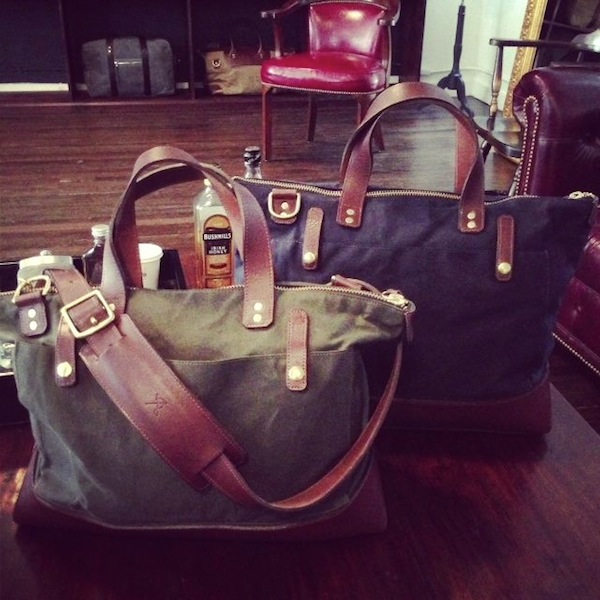
What are Ernest Alexander's plans for the future?
To open another store in New York. I like doing retail – I like creating a suitable environment for it. When we opened the first store, I spent at least three months building the shelves, selecting colors, and finding the right interior accents.
Can you tell me some more about the Ernest Alexander store in New York's Soho neighborhood?
The modestly-sized store features a collection of various antique items. They're things that I've brought back from my travels – towropes from ships, monocles, a harpoon, even old American snowshoes... they're things that tell the story of America. Then there's a whole wall with shirts on hangers, and tables that have other items set out on them.
So, you like to set up an environment and create a mood. What are your fashion shows like?
Fashion shows seem so silly to me. People strut there and back, while others sit and nod their heads, going “mhm, mhm...” I don't like them! We make our shows more like presentations that last for an hour and-a-half or two. We select, for instance, an impressive industrial space, put up good lighting, create an atmosphere, and put the clothing out on mannequins. That way people can look at and evaluate everything more comfortably and carefully.
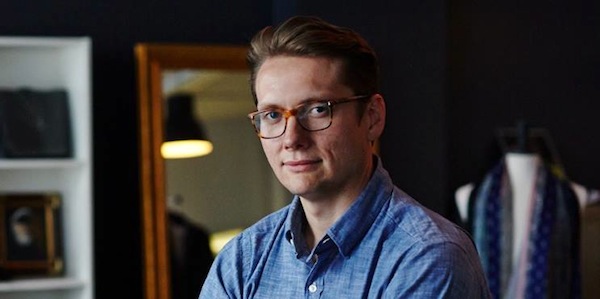
What makes you feel good?
The fact that I can depend on my colleagues, my family, my wife – without her, I wouldn't be where I am today. You need people by your side – to help you get up, brush yourself off, inspire you, give advice.
Do you have many friends?
I do. Sometimes I do get lonely, but that encourages creativity. Outside it may be a rainy New York day, I'm in my studio and I make myself some coffee, put on some mellow music, and get to work...
Any advice for young designers?
In the beginning, concentrate on one idea, on something small – maybe just a couple of items – but make them really well. To do something perfectly takes a lot of energy and mental strength, so don't take on too much.
And it's never to late to change your profession. Although you shouldn't drag it out too long – like, by the age of 40 ...
What's more – go forward and don't stop – even if you think everything's great the way it is!